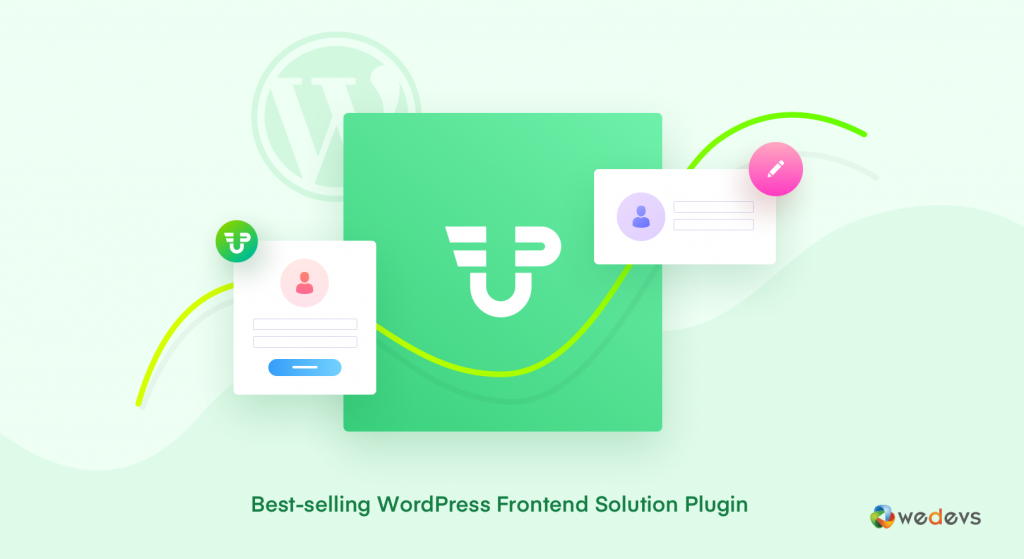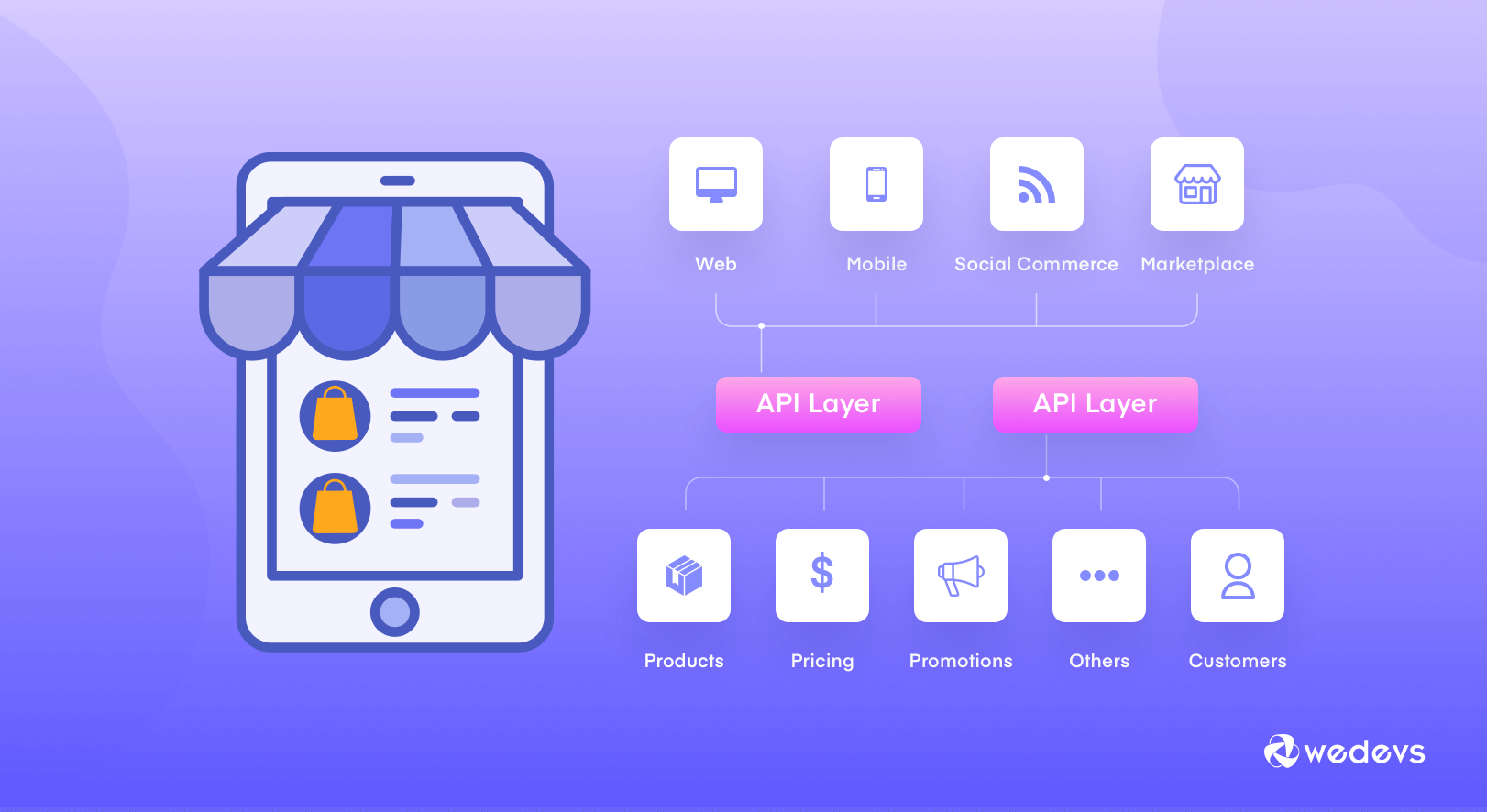
Headless eCommerce: Everything You Need to Know
Are you familiar with headless eCommerce? Well, in the eCommerce industry it is one of the least understood buzzwords.
Basically, it's an eCommerce platform where the whole system is focused on customer satisfaction. And, all thanks go to the IoT (Internet of Things).
Right now traditional eCommerce sectors are not quick enough to adapt to what online shopping occurs on social, tab, mobile, or IoT channels in a specific period.
For getting nimble digital data delivery many companies are transforming in headless eCommerce.
Besides that, this platform is quite user-friendly. Thus, the company that depends on eCommerce solely must try this to conquer the competition of the current marketplace.
What is Headless eCommerce

When your site's front-end gets decoupled from the main eCommerce platform it's called Headless eCommerce.
Here, the front-end is the presentation layer of a site that separates from the backend or core settings. For this separation, a retailer can serve rich components to the customers more flexibly. Automatically the customer engagement will rise.
Suppose, when a customer clicks on Buy Now, the frontend of the store gets a call to retrieve information from the backend which is really time-consuming. This is the scenario of a traditional eCommerce.
On the other hand, headless eCommerce de-couples both frontend and backend. And, it uses API to retrieve the information. Through this process, you can retrieve more data and in a faster way.
Moreover, developers now enjoy customizing the site. Because the front and back parts of the site don't depend on each other within code. They talk through API calls.
What is an API

When you use a laptop or smartphone, you get introduced with a UI (User Interface). Smart devices communicate with us and at the same time, we command them through this UI.
To read the data from the device, we use eyes, ears, or hands. API (Application Programming Interface) is apparently the same thing for a device. This UI is for machines.
Computers or other devices use API to understand each other and continue any command or process from the user. This also applies to the system (back end) to another system (frontend).
The fun part is the data delivery time and the amount is amazing. Thus, different platforms are using API to minimize the processing time.
What are API Users and API Providers

To get the idea about the API economy, you have to understand two main groups- API providers and API consumers.
Here, API providers implement APIs and they take IT support and different functionality from the company. This turns into a service.
After that, it puts out over the internet a developer portal. In this portal, you will get downloads, reference documents, and support. Developers will need all of these data to get the API work.
On the other side, API consumers integrate APIs while developing software or any application.
Suppose, you have an online Bike store and you want to know the people's exact location for the physical observation of your product.
In this time, you can add Google Maps by just adding a single line of code. That means the code or the API is creating a path between your site and Google Maps.
Here, you don't need to put much effort. Thus, people are getting crazier for using API. Why not you?

What is Traditional eCommerce

Traditional eCommerce is a platform where the frontend and the backend are tightly attached (opposite to Headless eCommerce). When the customer places an order, the command goes through the frontend to the backend.
This process takes a lot of time. Besides that, the developer can't change the settings whenever they want as it will impact the presentation layer.
But a traditional eCommerce platform is easier to create and you can launch it very quickly.
Headless eCommerce vs Traditional eCommerce
There are lots of differences between these two eCommerce platforms. After knowing the distinction, you can easily understand where you should opt-in for Headless or not.
| Traditional eCommerce | Headless eCommerce |
| Front-end development is so time-consuming | Front-end development doesn't take much time |
| Site development is difficult for developers | Site development is flexible |
| Need huge database modification | Developers don't require to modify the database |
| As the presentation layer is connected with the backend developers don't need build from scratch | Need to build everything from the scratch as there is no presentation layer |
| Take action directly from the frontend | Every action from frontend passes through an API call to the backend |
| Offer limited customization | Provide unlimited customization |
| Require less tech knowledge | Need lots of tech knowledge and access to the developers |
Advantages of the Headless eCommerce

Improve Performance
The frontend provides a full focus on delivering content. This characteristic assists to increase achievement and reduce complexity.
Website Security
The structure of the site is secure as the backend is private and the frontend code is public.
Customize easily
Site customization or extension is pretty effortless.
Developers get Freedom
Developers can modify the frontend without worrying about the backend. Thus, site development or modification can be done faster than before.
APIs Usage
For delivering digital data from frontend to backend headless commerce use APIs. That gets done within a short period. Thus, the whole process finished quite faster
Don't Need Advanced Skill to Access
While it's time to use trending technologies, some companies get back due to the difficult learning process. When you use Headless commerce, it solves all these problems. Everyone from the team can access and modify the frontend without having much technical knowledge.

Disadvantages of the Headless eCommerce
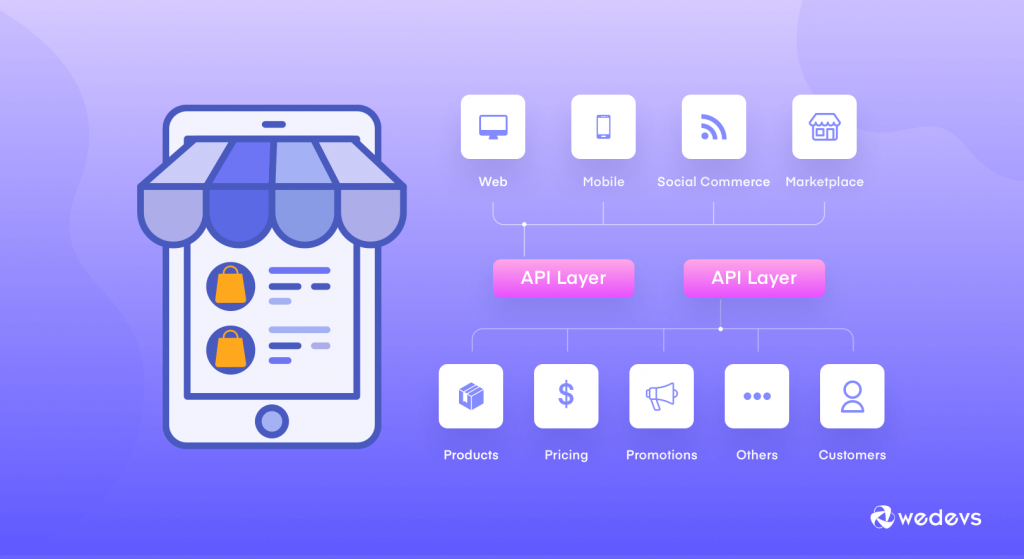
Extension and Management
As the presentation layer is decoupled from the backend, you have to develop the frontend from scratch. Moreover, huge standard features will need to be re-coded.
Isolation of Marketers
For not offering the frontend layer, the marketers will face some issues like-
- To create and publish content, they have to rely on other departments
- Can't preview their content as a user
- Can't create content in a WYSIWYG (What You See Is What You Get) context
Troubleshooting and Inclines
Traditional eCommerce has the advantage to update continuously where the Headless system stays behind. For updating the site in Headless, you just need to update the API.
But the problem is, it should be upgraded from their own hardware which belongs to the providers only.
In this case, the developer needs to provide time for updating. Plus, they have to find time to identify and troubleshoot issues.
Functionality Limitation
The Headless architecture restrained the administrative interfaces to the custom frontend layer that might not be composed for transactional eCommerce.
All Headless platforms are not designed in the same way. Some of them have restrictions on APIs, support, or features.

Why is Headless eCommerce Getting Popular
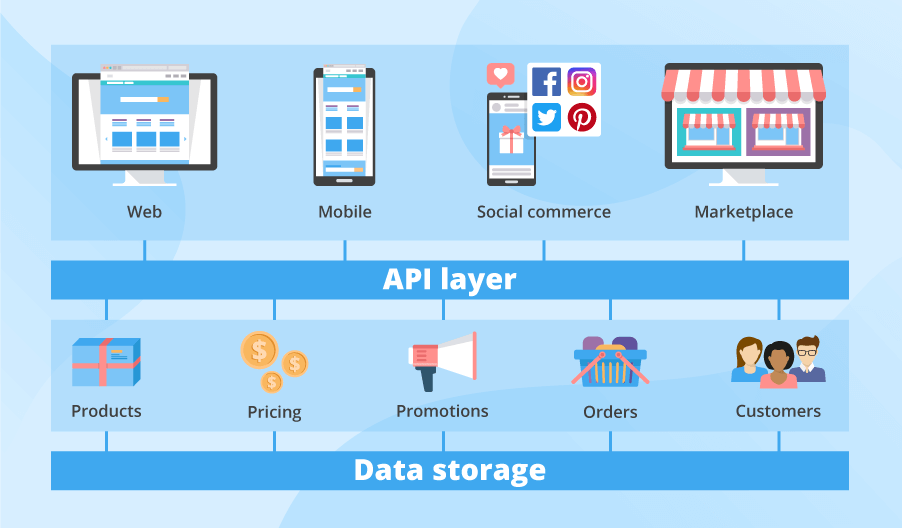
The popularity of Headless commerce is everywhere. People are opt-in to Headless from traditional commerce. But why? Let's know the reason for the demand for this new eCommerce platform.
Winning the Competition Over Traditional eCommerce
Nowadays the customers want more flexible and faster responses from the site. The traditional one tends to be inflexible as the presentation layer is attached to the backend. Thus, a simple change affects the frontend and the entire user experience.
However, in Headless commerce the companies can show the best out of it and the customers tend to visit them again and again.
Fulfill the Expectations of Customers
After getting multiple availabilities in shopping, consumer's expectation is getting higher. To gain the concentration of these customers, retailers tend to provide faster service and delivery.
In this situation, Headless commerce can be game-changing equipment for the company owner. It ensures quality service and quick data delivery through APIs. There is no doubt that Headless eCommerce can be a great investment for your business.
More Customer Interaction
Headless commerce can reach as many as channels to interact with people. It can deliver services in any format to the users without disturbing the design.
The architecture of Headless commerce is enabled to relinquish a broader audience. Which is really essential for business development.
Who Should Use Headless eCommerce

Headless commerce is new and trending, easy to customize for developers, focus on customer satisfaction– for all these characteristics you can't opt-in to Headless eCommerce.
Before jumping into a whole new business platform you have to analyze it side by side according to your business goal and requirement.
We have researched on who should use this eCommerce platform. And found-
- Large companies who need to update content regularly
- Business with multiple systems who need to combine with the eCommerce platform
- Enterprises who already own a venerable CMS and require fast growth
Smaller businesses can also use Headless commerce but it's ideal for those businesses who have the budget and most importantly require the specification just like Headless.
5 Example of Top Headless eCommerce Sites
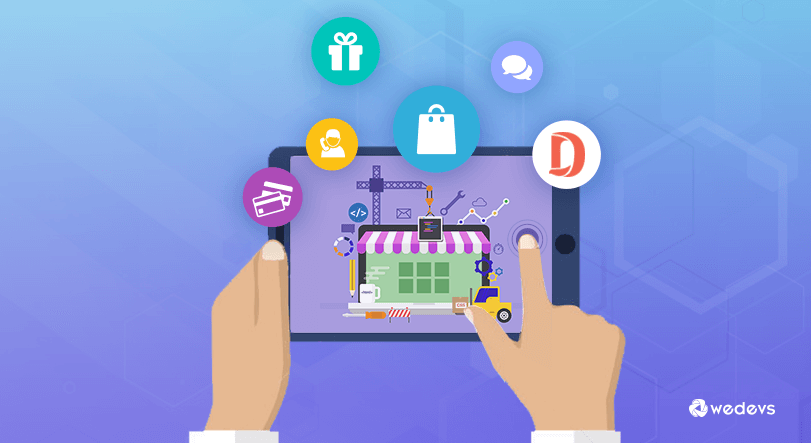
Here, we will introduce 5 inspiring Headless eCommerce sites who are big companies in real life.
Walmart
Do you know that Walmart was one of the first business sites that adopt a headless architecture? Behind this big decision, their main aim was to deliver a faster and exciting buying experience.
Firstly, they have decoupled the presentation layer. Thus, Walmart gets the full freedom to use the backend functionalities.
Now the eCommerce revenue of this giant online platform has crossed the sky.
Coca-Cola
Coca-Cola sells huge products via eCommerce systems. But for balancing good support of its ever-changing initiatives, this company needs a unified system that can deliver data more frequently.
Thus, their IT team looked for API systems to grow their business. Because it can pass the data faster than the traditional eCommerce. And, this large company start using Headless eCommerce to integrate with their customers.
Amazon
For an abundance of audiences on the site, Amazon's traditional commerce was unable to support them well. Every day it got bigger and the size of the code and database becomes larger.
So, it was really tough for the developers to maintain both sides (Frontend and Backend) all along.
Then they found Headless eCommerce which can speed up the site performance. Besides that, it handles the traffic more precisely. On the other hand, developers get full freedom for updating or customizing any sector.
Final Thoughts on Headless eCommerce
Headless commerce is on the trend for focusing on customer satisfaction. And at the same point, it saves huge time for the developers.
Well, do you want to opt-in for Headless eCommerce? If yes, don't forget to analyze your company's goals and requirements. Though the API call system is fascinating for an eCommerce platform, you should look at your resources.
If you have the resources and needs of Headless eCommerce then start the transition process from today. It won't take much time.
Don't forget to share your experience if you are a Headless commerce user.
Have a nice day!
